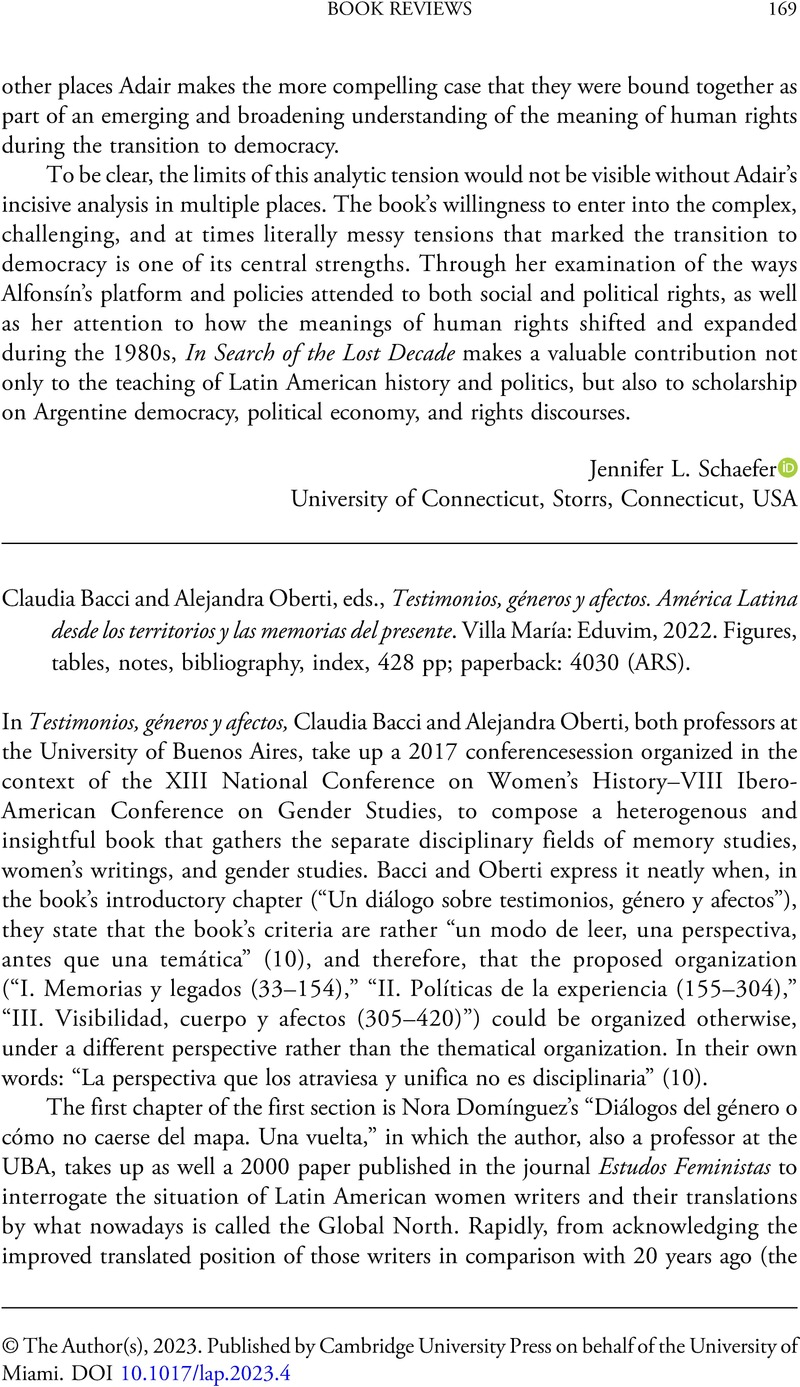No CrossRef data available.
Article contents
Claudia Bacci and Alejandra Oberti, eds., Testimonios, géneros y afectos. América Latina desde los territorios y las memorias del presente. Villa María: Eduvim, 2022. Figures, tables, notes, bibliography, index, 428 pp; paperback: 4030 (ARS).
Review products
Claudia Bacci and Alejandra Oberti, eds., Testimonios, géneros y afectos. América Latina desde los territorios y las memorias del presente. Villa María: Eduvim, 2022. Figures, tables, notes, bibliography, index, 428 pp; paperback: 4030 (ARS).
Published online by Cambridge University Press: 17 April 2023
Abstract
An abstract is not available for this content so a preview has been provided. Please use the Get access link above for information on how to access this content.

- Type
- Book Review
- Information
- Copyright
- © The Author(s), 2023. Published by Cambridge University Press on behalf of the University of Miami
References
Fisher, Mark. 2014. Ghosts of My Life: Writings on Depression, Hauntology and Lost Futures. Airesford, UK: Zero Books.Google Scholar
Sarlo, Beatriz. 2005. Tiempo pasado. Cultura de la memoria y giro subjetivo. Una discusión. Buenos Aires: Siglo XXI.Google Scholar


